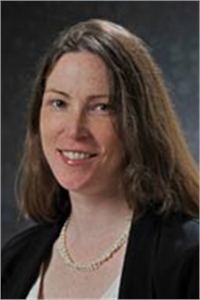Abstract: Perhaps the oldest fabricated sensors (beyond timekeeping), magnetometers have been used for navigation, for orientation, and for exploration dating back several millennia to ancient Chinese and Olmec civilizations. As scientific knowledge has grown, so too has the complexity, capability, and diversity of magnetic sensors. The humble origin of lodestone has been replaced by modern flux loops, SQUIDs, and atomic ensembles. Here I will present a new class of quantum magnetometer, which measures field tied to physical constants and vector projections on quantum axes. While atomic systems are typically the workhorse of quantum sensors, this work advances solid-state systems, in particular large ensembles of nitrogen vacancy color centers in diamond. Nitrogen vacancies (NV) in diamond are quantum color centers that maintain their coherence over a wide temperature range, vacuum-free, with the atom-like quantum systems isolated within a carbon lattice. The appeal of these solid-state quantum particles stems from the color centers’ ability to act not only as a sensor, but also to be initialized/read-out optically, to be manipulated with RF, and to have an intrinsically long coherence time even at room temperature. I will show results from the MIT-LL NV magnetometer, which demonstrate full vector reconstruction and high dynamic range.
Biography: Dr. Danielle A. Braje is a technical staff member in the Quantum Information and Integrated Nanosystems Group, leading the quantum sensing effort. Her research applies the fundamental stability of quantum systems to the sensing arena. Current development focuses on small, portable solid-state systems, such as nitrogen vacancies in the diamond lattice. Her research interests span from atomic physics and low-light-level nonlinear optics to atom interferometry and quantum coherence.
Prior to joining Lincoln Laboratory, Dr. Braje was a faculty member at Reed College, working in coherent effects in laser-cooled atoms and a research scientist at the National Institute of Standards and Technology (NIST)–Boulder developing compact laser frequency combs. During her first four years at Lincoln Laboratory, she worked in superconducting quantum computing before refocusing on sensor-based applications of quantum systems.
Dr. Braje has received the Hertz Fellowship, Urbanek Fellowship, National Science Foundation (NSF) Fellowship and has served on NSF and NASA panels. She is a member of the American Physical Society.
Dr. Braje earned her PhD degree in applied physics from Stanford University and her BS degree in physics from the University of Arizona.



